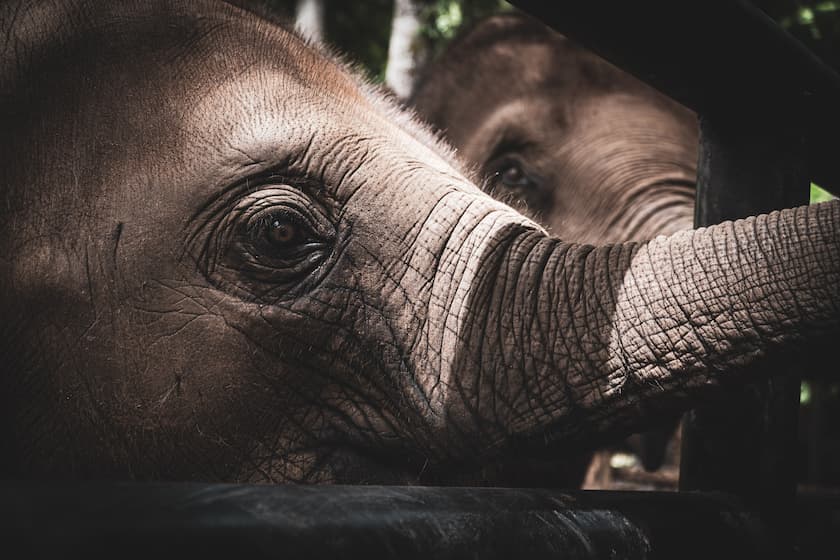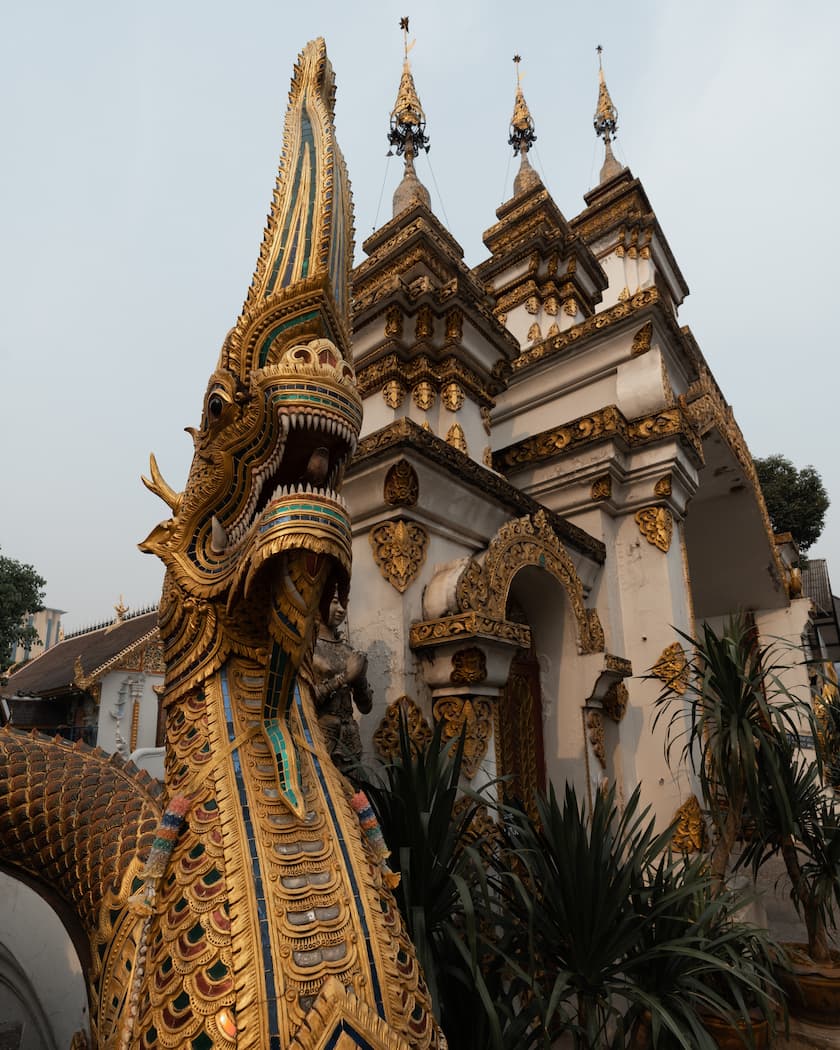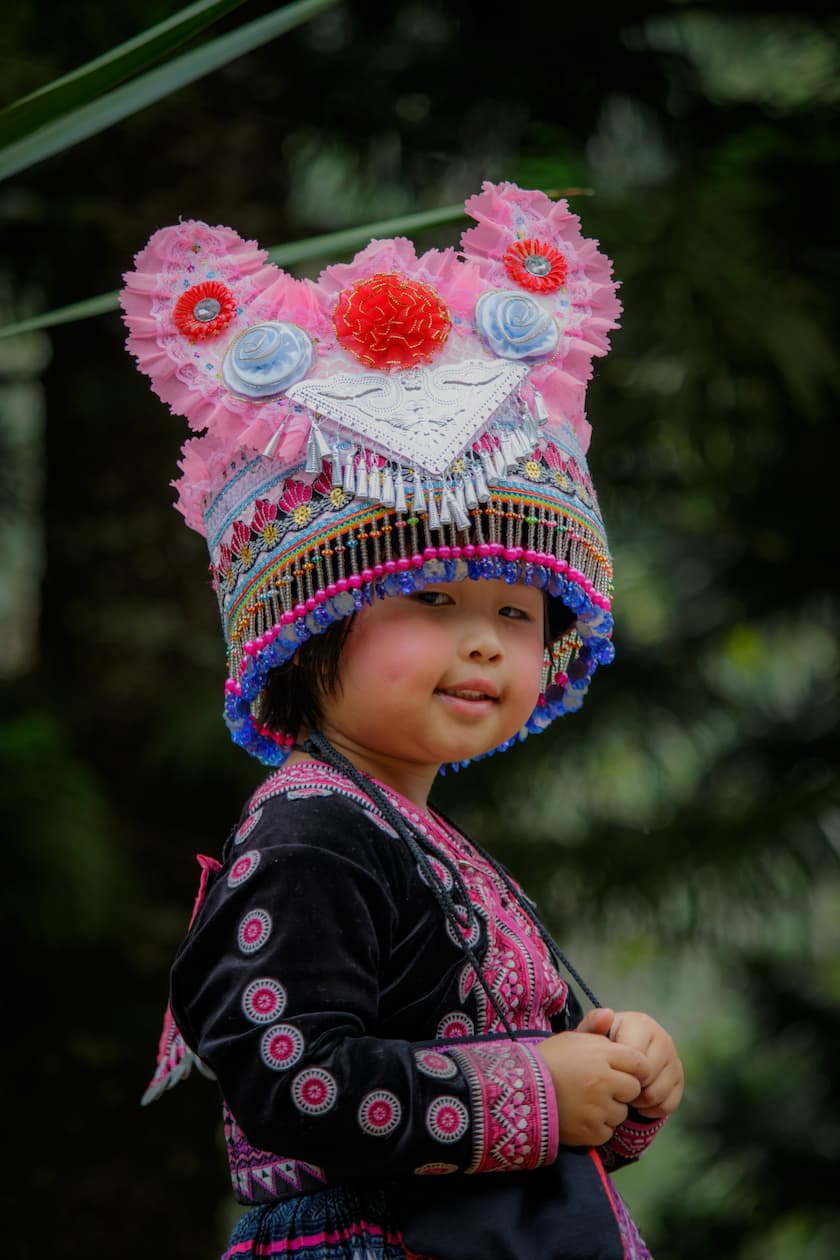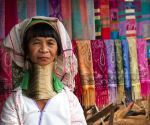Child Friendly Things to Do In Chiang Mai
Chiang Mai offers a range of activities that are child friendly from animal parks to historical centres.

Child Friendly Attractions in Chiang Mai
Chiang Mai Zoo
Chiang Mai Zoo was the first zoo in Northern Thailand, and is located in the foothills of the Doi Suthep Mountains. It spans over 200 acres of land, and is home to more than 400 animal species, including elephants and tigers.
The Zoo features attractions like the African Zone, with ostrich, giraffe and zebra; the Nakornping Bird Park, with over 1,500 birds; and Chiang Mai Aquarium, with its underwater tunnel providing unique views of the sea life.
One of the main attractions at the zoo is the panda enclosure with two pandas on loan from China. Chuang Chuang and Lin Hui arrived in 2003 and are housed in a large enclosure designed to mirror the cool, mountain climate of their natural habitat. The pandas are at their most energetic in the morning, and although visitors pay an additional fee for this exhibit, it’s well worth popping to see these playful animals.
The zoo is spread over a large area and children will find it tiring to get around on foot. Vehicles are permitted in the zoo, but to make it easier for tourists to get around, a shuttle bus service runs regularly and stops at each attraction.
Chiang Mai Night Safari
The Chiang Mai Night Safari is located just under 15km south-west of Chiang Mai Old City. It officially opened in 2006, and enables guests to experience the thrill of being outside among wildlife at night.
The park is broken up into three animal zones set around a central lake: Savanna Safari, Predator Prowl and the Jaguar Trail. Both the Savanna Safari and Predator Prowl are explored in open-sided safari trams and you’ll have sightings of giraffes, zebras, elephants, hyenas, lion and numerous other predators and their prey. The Jaguar Trail is a walking trail that is also open during the day, and you can explore this at your leisure.
In parts of the park you’ll come across animals, such as wild deer, roaming freely. While these animals are not dangerous, it’s best not to interact with them. Children will enjoy activities like the kid’s zone, musical fountain, and Tiger World. A great attraction for children is the Digital Zoo which includes an interactive wall and floor, a laser gun game, holograms and piano steps.
Grand Canyon Water Park
The water park is the only one of its kind in Northern Thailand and is located about 18km south-west of Chiang Mai Old City. It opened in 2016, in an abandoned quarry that had filled with water due to monsoon rains. The park is monitored by qualified lifeguards.
There are many features to enjoy at Grand Canyon Water Park, but the main attraction is the floating, inflatable obstacle course. This has a similar design to the one you see on the television show Wipeout and although loads of fun will tire you and your children out fairly quickly!
Other activities include a water trampoline, a 10m giant slide, and a dedicated kids’ zone with shallow pools and smaller slides for younger children. Adrenaline junkies can get their hit from the zipline, cable-system wakeboard or aquaskipper.
For a more chilled experience, hire one of the kayaks and enjoy the quarry at your leisure, or sit and relax in the food court or coffee shop. The entrance fee includes most activities, however some are individually priced.
Elephant Nature Park
The Elephant Nature Park is a rescue centre and about 60km from Chiang Mai. While it mainly accommodates elephants, the park also assists with dogs, cats, buffalo and other rescued animals needing love and attention. The elephants roam freely around the park, interacting with each other and playing in the river and man-made mud pits.
Visitors to the centre can choose the level of interaction they wish to have with the animals. You may wish to spend a few hours merely observing, or prefer to participate in one of the special projects that take place outside the camp. Here, you can walk with the animals, feed and bathe them, depending on the package that you select.
There are a number of packages to choose from, ranging from a short park visit to a seven-day volunteer packages. The majority of the packages focus on a single day, and with a few exceptions, these are suitable for children of any age.
Nong Buak Haad Public Park
This popular park in the southwest corner of the old walled city is a great place to sit and relax, and take in the sights and sounds of authentic Thai life. There are three large ponds in the centre of the park, and the surrounding paths and bridges create a lovely track for walkers.
The Buak Haad park hosts the city’s Flower Festival in February each year. During this event you’ll see displays by landscapers featuring various garden designs, stands selling local plants, exhibitions of gardens from neighbouring countries and a competition for the best displays of flowers and trees.
A children’s playground, basketball courts and a coffee shop are some of the other features of this natural green space which is the only one of its kind within the old city walls. The park is popular with families, both local and those just visiting the area from other parts of Thailand or further afield.
Queen Sirikit Botanical Gardens
Queen Sirikit Botanical Gardens opened in 1992 and is located in the foothills of the Doi Suthep-Pui Mountains north of Chiang Mai. There’s a lot to see in the gardens and you should allow sufficient time to take in as many of the different areas as possible.
Spend time wandering through the flower and fern gardens, trundle along Banana Avenue, or enter one of the eight diverse glass houses. Each of these has a different theme, from orchids to cacti and tropical rainforests.
One of the newest attractions of the gardens, and definitely a highlight, is the Flying Draco Trail. This is an elevated canopy walkway, constructed from glass, fibreglass and steel, and named after a type of flying lizard found on the Suthep Mountain. At 20m high and 400m long, the walkway provides a different perspective of the botanical gardens and showcases the sweeping views across the jungles of the surrounding Mae Rim district.

Doi Suthep-Pui National Park
Encompassing more than 260 square kilometres, Doi Suthep-Pui National Park lies about 16km northwest of Chiang Mai. The area is a haven for birds and other wildlife, which thrive in the mild climate and combination of deciduous and evergreen forests.
The twin peaks of Doi Suthep and Doi Pui rise majestically from the lush landscape, and are the focal point of the park. They attract walkers, hikers, and mountain bikers who come to the park to enjoy the many mountain trails, either for sport or for some time out from busy city life.
Must-see attractions in the national park include the Buddhist temple, Wat Phra That Doi Suthep and Bhubing Palace, a royal residence. Further exploration will lead you to a couple of tribal villages where you can view these local residents at work and play in their natural environment.
Chiang Mai Night Bazaar
The Night Bazaar is one of Chiang Mai’s largest markets and a main attraction for tourists. It’s located on the Chang Khlan Road, between the Tha Phae Gate into the Old City and the Ping River.
Traders set up from 18h00 and sell their wares late into the night. The market stretches for a few blocks, with hundreds of stalls selling anything from clothing to spices and everything in between. It extends up into some side streets where you can find more treasures, as well as taste some delicious street food.
Many of the items are duplicated at a few stalls, so it’s easy to shop for bargain prices. Haggling is a big part of market life in Thailand, and the first price you’re given by the trader is always higher than you end up paying.
Siam Insect Zoo
Budding entomologists will relish a visit to the Siam Insect Zoo, located about 25km northwest of Chiang Mai Old City in the Mae Rim District. The facility is both an insect museum and a breeding farm. Here, you can get up close and personal with a variety of insects, both dead and alive.
A Discovery Zone showcases exotic insects displayed in glass cases. Each case is carefully notated with historical information about that insect family. The displays date back as far as 30 years, and include butterflies, dragonflies, beetles and spiders.
In the butterfly garden you learn the lifecycle of the butterfly, what they eat and how they contribute to the insect ecosystem, while in other parts of the zoo you can grit your teeth as you hold one of the tarantulas or other creepy crawlies.
Maesa Elephant Camp
Maesa Elephant Camp promotes a natural environment for the elephants it houses, where they are free from chains and there is no riding or tourist shows. The camp has been operating since 1976, although originally started as a tourist attraction with elephant riding and shows.
These days, Maesa accommodates upwards of 70 elephants, of various ages and in varying stages of health. Elderly and poorly elephants are housed in a section of the park called The Chang, and here they live out their days roaming free, bathing or just resting.
Both the full day and half day tours are suitable for children. Visitors can prepare food and feed the elephants, and walk with them to either bathe in the stream or the mud bath.
Bhubing Palace
Also known as the Winter Palace, this is the royal residence for the family’s seasonal visits to the north of the country. The palace is open to the public apart from when the royal family are in residence.
The Palace is on stilts and consists of two floors. The ground floor is for the royal entourage while the first floor is the royal residence. The royal guesthouse nearby on the property houses royal visitors and senior palace aides, as well as those invited to attend royal banquets.
The palace grounds are well cared for, and visitors to the property can view the teak pavilion, fern garden, water reservoir with its musical fountain and the beautiful rose garden.
Flight of the Gibbon
Flight of the Gibbon was first set up in 2007and has grown to be the largest zipline in Asia. It’s a combination of ziplines and rope bridges taking you on a tour through the exotic Thai rainforest. You are also taken on an educational walk through the rainforest where you’ll learn all about the different flora and fauna that are found in this region. Keep an eye out for the white handed gibbons that are occasionally spotted along the course.
The experience is around seven hours with transport, and includes two to three hours of ziplining. Children are welcome, and while there are no age limits, you must be at least one metre tall to participate.
You receive a full safety briefing and safety gear before setting off. After lunch, you can choose to hike to the Mae Kampong Waterfall, or you can take the time to relax and reflect on your experience, before heading back to Chiang Mai.
Highland People Discovery Museum
The Highland People Discovery Museum was formerly called the Tribal Museum and showcases the history and indigenous culture of nine hill tribes of Northern Thailand, including Hmong, Mien and Akha. Visitors can watch a short video on arrival before wandering through the museum at their leisure and browsing the authentic, handmade items in the gift shop.
The museum is spread over three floors. The first covers the life, history, culture and traditions of the hill tribes; the second floor concentrates on traditional dress and childhood in the highlands, while the third floor has displays and educational material about the royal duties to and relationships with the hill tribes.

Admission to the museum is free and the museum provides the perfect setting to learn about the various hill tribes from the area.
Huay Kaew Waterfall
Huay Kaew Waterfall is a natural waterfall, about 10m high and located just outside Chiang Mai close to Chiang Mai Zoo. Water flows throughout the year from high up in the Doi Suthep Mountains, through the hills to the waterfall. From the waterfall it continues its journey to Huay Keaw Village and then to the surrounding irrigation canals.
The waterfall level is at its lowest at the end of the dry season, just before the rainy season kicks in around April. The lush vegetation around the waterfall attracts picnickers and families with small children who can play in the small rock pools. More energetic visitors can enjoy the hiking trail from the waterfall up to the Wang Bua Ban viewpoint.
Chiang Mai City Arts & Cultural Centre
The old Provincial Hall of Chiang Mai, close to the Three Kings Monument, is the location for the Chiang Mai Arts & Cultural Centre. This centre combines exhibitions, dioramas, artefacts and audio-visual displays to illustrate Chiang Mai’s rich history leading up to modern times.
The displays are split between 15 rooms, each depicting a different period or topic. Most of the exhibitions are permanent, and include topics like life along the Ping River, Buddhism and life in the city. The centre also has a small scale replica of a traditional wooden village built in Lanna-style.
Lanna Folklife Museum
The Lanna Folklife Museum is located adjacent to the Chiang Mai Arts & Cultural Centre in the old city, in a colonial style building that was previously the Provincial Court. The museum tells the story of life in the Lanna Kingdom in days gone by, through a series of displays and scenes depicting how the Lanna people lived.
There are few artefacts in the museum, but visitors gain insight into the lifestyle, traditions and occupations in villages in the Lanna Kingdom.
Chiang Mai Historical Centre
The Chiang Mai Historical Centre is housed in a Lanna-style building a stone’s throw from the Lanna Folklife Museum and the Chiang Mai Arts & Cultural in Chiang Mai’s Old City. The museum provides a trip through the rich history of traditional life in the area, with interactive displays and models and explanations in various languages.
Visitors learn about Chiang Mai’s transition from the Mangrai Dynasty, through Burmese Rule until its liberation and transformation to a Province.
In the basement, visitors can see ruins of what is believed to be walls of an ancient temple. These were uncovered when construction on the museum began. These have been preserved and included in the centre’s historical displays. The grounds around the museum are beautifully maintained, and include a traditional Thai shrine.
Bo Sang Umbrella Village
Popular with tourists from all corners of the earth, the Bo Sang Umbrella Village is located about 18km east of the Old City. The brightly coloured umbrellas are hard to miss and this village is a must-see for visitors to the area.
The umbrellas are hand-made by skilled craftsmen and women. A tour through the factory is definitely a highlight of Bo Sang and you have the opportunity to follow each step in the umbrella-making process, watching how they take shape from the smallest part to the final finished product.
Children and adults alike will love the brightly coloured displays in the shops and stalls. There are many chances to purchase an umbrella of your preference, or one of the other items carefully crafted by the locals.
Hmong Tribal Village
Just a few kilometres from Wat Phra That Doi Suthep in the Doi Suthep-Pui National Park is a tribal village of the Hmong hill tribe. While there are many Hmong hill tribe villages throughout Thailand, this one is probably the closest to a town, making it easier for tourists to visit and learn about their way of life.
Originally from Southern China, the Hmong people migrated into Laos and Vietnam towards the end of the 18th century, with many continuing into Northern Thailand where they set up small rural villages. One of these villages is in the Doi Suthep mountains where they grew fields of opium poppies. These informal poppy fields were developed into more structured agricultural farms with crops such as cabbage and potatoes.
A small museum in the village provides a glimpse into the different hill tribes, their customs and way of life. The Hmong people are famous for their bright, intricate embroidery, and there are many souvenir stalls where tourists can purchase embroidered fabrics and trinkets, and in doing so, help to support the livelihood of this quiet tribe.
Chiang Mai National Museum
The Chiang Mai National Museum, to the northwest of the city, is the main museum in Northern Thailand and spans two floors. The architecture is very traditional, with a tiered roof indicative of the Lanna-style of days gone by.
Here, you’ll find six exhibitions depicting the history of Chiang Mai city and the Lanna Kingdom, which ruled over North Thailand until merging with Siam in 1775.
The exhibitions take you on a trip through the history of the Chiang Mai region, from the late 13th century until modern times. They cover the ecology and geography of the area, prehistoric settlement, trade and economy, agriculture and art.
Lanna Traditional House Museum
If you want a real peek into life in the Lanna times, a visit to the Lanna Traditional House Museum is a must. There are twelve houses in this outdoor museum, each affording you a glimpse into how people lived in those days. Displays include a traditional bamboo house, a townsfolk house and a Northern Thai house.
The most elaborate house in the museum is a colonial style dwelling that was built in 1932 and belonged to a teak merchant. It stands in its original location, while the other houses were transported to and rebuilt on the museum site. Information about each property is displayed at its entrance.
Hidden Village
The Hidden Village is a dinosaur park about 10km north of the Old City. It’s an entertaining place for children, but also enjoyed by adults who marvel at the displays and scenery. The park has two main zones. The Statue Zone has an array of large animal statues, as well as some larger than life insects and plants. In the Dinosaur Zone you’ll be confronted by T-Rex, Triceratops, raptors and any other prehistoric creatures you can think of.
The Hidden Village also has some live animals, and you can enjoy the petting zoo, bunny and bird farm, or go on a horse ride. A playground, train and restaurant round out the attractions at the Hidden Village, making a visit here a day well spent.
Elephant Parade House
Elephant Parade House is a social initiative started in 2006 by a father and son team to protect Asian elephants from harm and threats to their natural habitat. In a nutshell, this is the largest exhibition of decorated elephant statues. What makes it unique is that each statue is created by a celebrity or artist.
In addition to the fabulous display of colourful elephants, Elephant Parade House runs workshops where you can paint your own elephant souvenir. You also have a tour through the workshop where you can watch the artists in action as they add to the colourful elephant exhibition. This is a fun day out for the whole family!
Art in Paradise
For a 3-dimensinal illusionary experience, Art in Paradise is a must. Located a few minutes southeast of the Old City, Art in Paradise provides unique photo opportunities for the whole family.
The museum is divided into eight themed zones: Aqua zone, Zoo zone, Dinosaur zone, Surrealism zone, Classic zone, Lanna zone, Thai zone and Egyptian zone. Each zone creates a realistic setting which, through the 3D effect, makes you feel part of the setting.
You should allow at least two hours for exploring the entire museum. Once you’ve finished, you can relax with a beverage or light meal in the restaurant or coffee shop.
Museum of World Insects and Natural Wonders
A visit to the Museum of Word Insects and Natural Wonders is a welcome break from learning about the history and culture of Chiang Mai. There are examples of more than 10,000 species to view, including specimen from all 459 known mosquito species in Thailand.
The museum is located adjacent to the Green Palace Hotel, between Chiang Mai Old City and Nimmanhaemin Road. Although hard to find, the museum is a treasure trove of mounted insect specimens interspersed with eccentric works of art.
The insect exhibition is a personal collection belonging to Dr Rampa Rattanarithikul, a world leader in mosquito research, and her husband, Manop who is an expert in the field of Malaria.
PooPooPaper Park
A very unique museum and workshop worth a visit is the POOPOOPAPER Park, about 20km north of Chiang Mai’s Old City. A tour through this eco-friendly, facility showcases how paper products are made using fibres from elephant poop.
Chiang Mai has a rich history of paper-making and the POOPOOPAPER Park takes this to the next level. The idea of making paper products from elephant dung formed over 15 years ago, and the first experimental products were embraced by international retailers. The concept has developed into the successful, sustainable operation that it is today.
The park explains the processes involved in extracting the necessary fibres, and shows how they are then developed into paper and paper products. The handcrafted products also use cow, horse and donkey poo, and include such items as cards, stationary, journals and notebooks.
Related Articles
- Family Days Out in Chiang Mai
- Hidden Gems in Chiang Mai
- Most Visited Attractions in Chiang Mai
- Temples in Chiang Mai
- Family Friendly Fun in Chiang Mai
akyra MANOR CHIANG MAI HOTEL
22/2 Nimmana Haeminda Road Soi 9,
Su Thep, Muang Chiang Mai District,
Chiang Mai 50200, Thailand
T : +66 (0) 5 321 6219
M: Location
Others Blog
Latest Post
The Karen Hill Tribes of Chiang Mai
22/04/24Extend Your Stay in Chiang Mai
01/04/24



